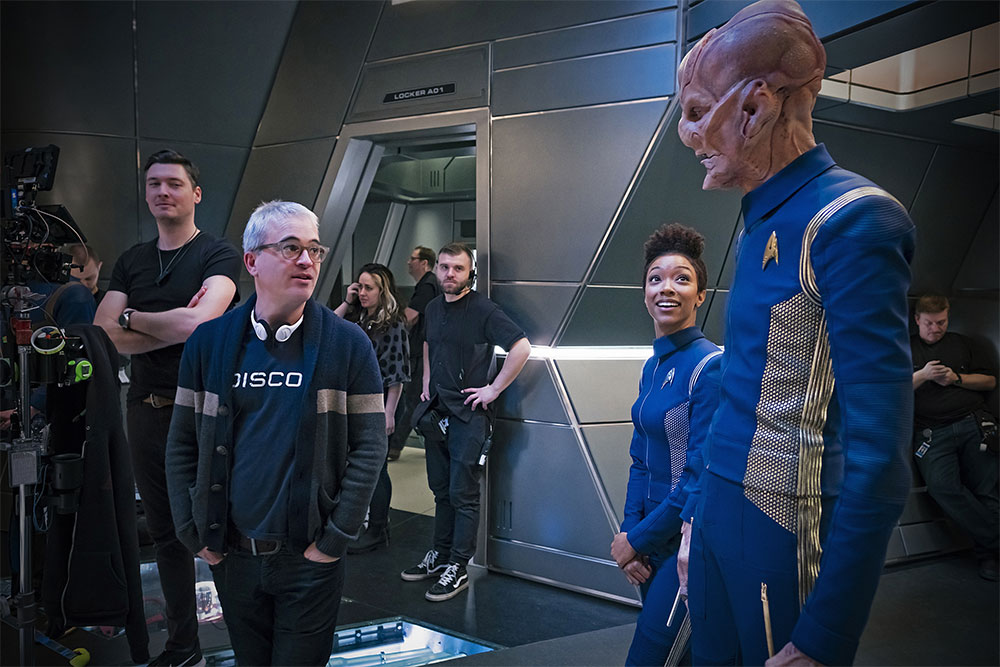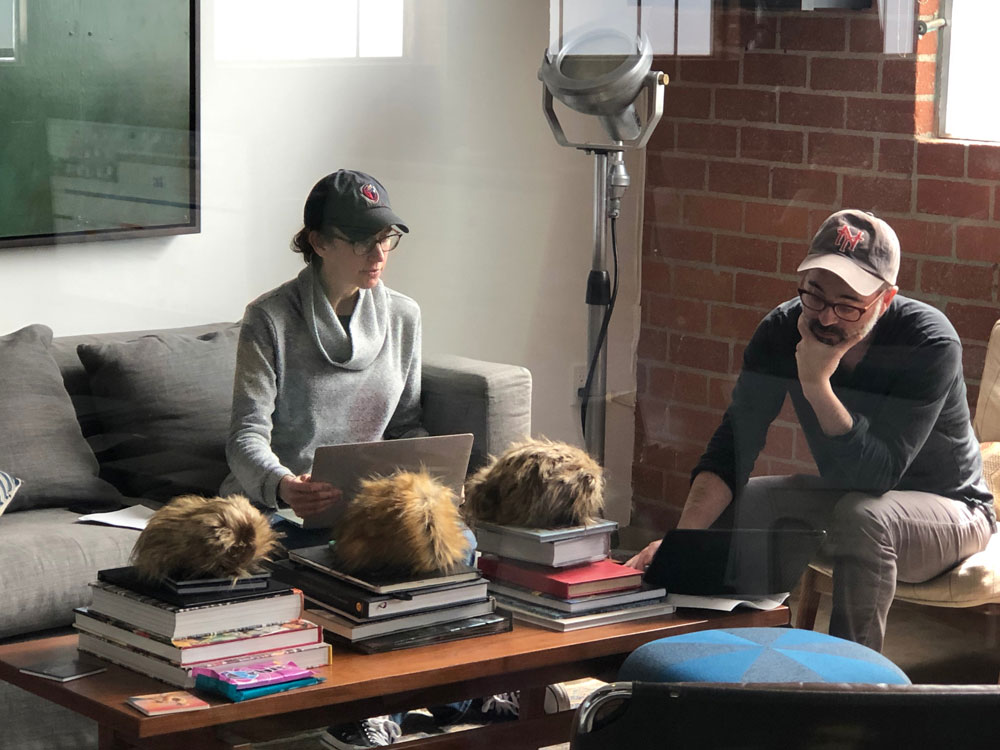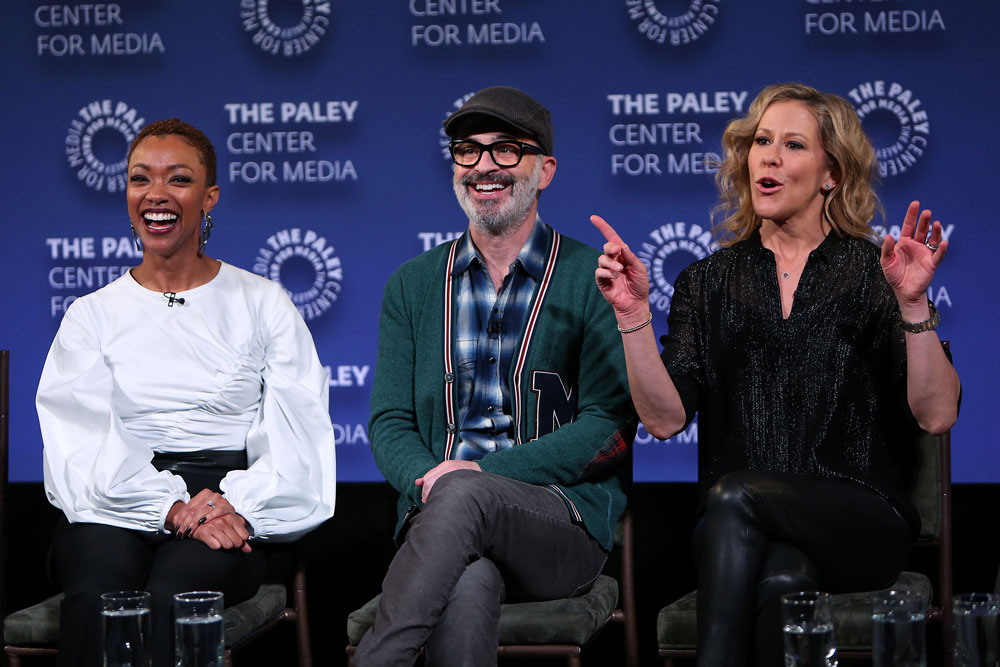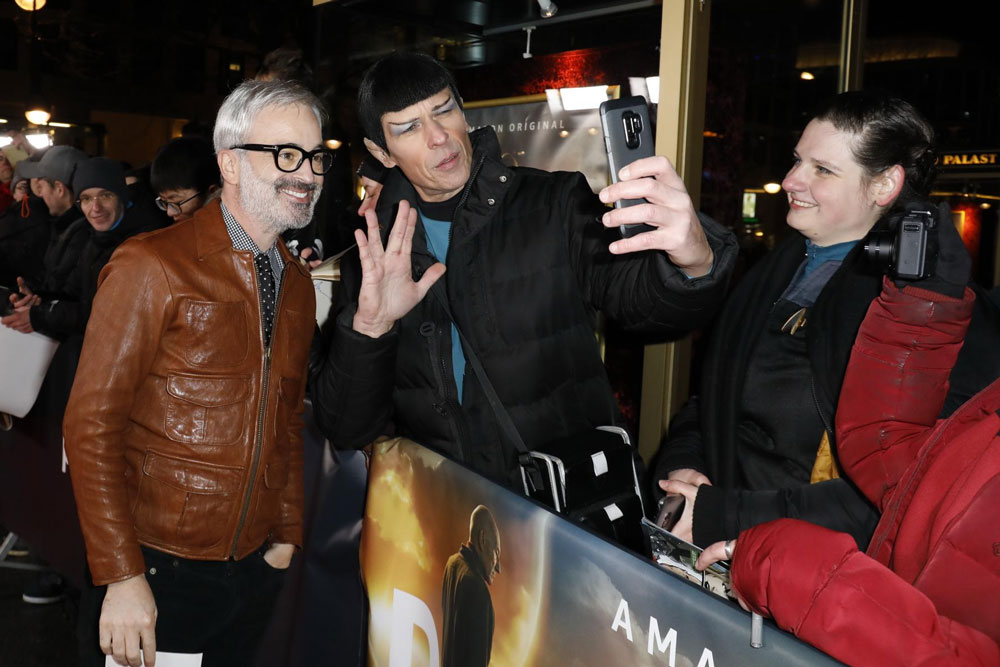We’re just a few days away from the new season of Star Trek: Discovery — delayed for months after the coronavirus pandemic impacted the series’ post-production schedule — and today, a new interview with Discovery showrunner and overall Star Trek franchise boss Alex Kurtzman includes some optimistic news for the future of series… and Star Trek as a whole.
Speaking today with The Hollywood Reporter’s TV’s Top 5 podcast, Kurtzman spent some time talking about many of the things we’ve heard him discuss before — diversity in the franchise, this time in the wake of the casting of Blu del Barrio and Ian Alexander; the need to make every new Trek series different to avoid view fatigue after announcing Kate Mulgrew’s participation in the animated Star Trek: Prodigy kids’ show, and so forth.
But in addition to those familiar comments, Kurtzman also got two direct questions about the future of the franchise from THR hosts Daniel Fienberg and Lesley Goldberg: how much longer will Star Trek: Discovery be around, and how far does the horizon stretch ahead for the Star Trek franchise as a whole?

We already know that Star Trek: Discovery is in active pre-production for it’s not-actually-announced fourth season, and Kurtzman himself has already mentioned “future seasons of Discovery” in public interviews — but today the big boss was much more explicit about the fate of the flagship series.
I’m going to say, in all honesty, there are years and years left on DISCOVERY.
I think that because STAR TREK, in general, has had a long history of going something like seven seasons minimum, and we just jumped into the future… it’s not that it’s a brand new show, but it’s a whole new set of variables with a whole new set of ideas and stories, and I don’t think we limit ourselves to thinking, “Oh, we’re capped at this place.”
I’ll tell you, when the show starts to feel stale to us, we will be rallying to stop it — but for now it doesn’t feel like we are running into a shortage of stories.
On top of that — in the wake of already-known additional seasons of Discovery, Lower Decks, Picard, the soon-to-film Star Trek: Strange New Worlds Series, the in-production animated show Star Trek: Prodigy, the still-in-development Section 31 Section 31 series with Michelle Yeoh, and whatever else may be in the pipeline — Kurtzman revealed for the first time that what was once a five-year-plan for the franchise has already started to stretch further into the future… to a target out ten years from where things launched in 2017.
Heather Kaden and Aaron Baiers, who work with me at Secret Hideout — we literally just got of a call with the network mapping out [plans for STAR TREK] through 2027.
Now when I say that, it’s not like it’s set in stone. It’s just, “Here’s a plan. Here’s what we’re looking at. Here’s how the different shows are going to drop.”
Consider the fact that it takes a year from inception — from starting production — to airing, you have to plan way, way, way in advance to get these things done, and you have to stay on top of the zeitgeists and make sure that what you’re doing is relevant.
So you have to plan so far in advance now in different kinds of ways [like safety and budget] to seem loose and improvisational, but there’s nothing loose and improvisational about it.
That ‘loose and improvisational’ note, by the way, can apply to the Star Trek: Strange New Worlds green-light that will give Anson Mount and company their own series.
While certainly fans reacted well to his take on Captain Pike, and hoped for more adventures featuring his time aboard the USS Enterprise, plans for a Pike-crew series were in the works well ahead of the May 2020 announcement — rumors put it in the works as back as during the production of Discovery Season 2 before fans even saw his performance.

Though the future of the franchise is looking rosy, the future of Star Trek production on the other hand is definitely becoming a challenge in the current pandemic-affected world; Kurtzman spoke at length about the difficulties the cast and crew will be facing as they return to the Toronto soundstages for filming, ahead of active production on both Discovery Season 4 and Strange New Worlds Season 1.
We just started shooting a new [non-STAR TREK] show and it’s been a real learning curve just in the three days that we’ve been doing it. the great news is that it’s very doable, but it is a highly, highly militarized operation.
Everything is different. Everything is slower, between testing and… you know, your set doesn’t function like the set used to function. There are groups that are vetted by the unions; ‘pods’ within the groups themselves; there are rotations in and out — of people — so that if somebody gets sick in your pod, the pod just gets removed and another pod gets pushed in but it doesn’t infect the whole group.
It is a massive, massive, militarized operation, and we haven’t even started that yet on a STAR TREK show. So there’s gonna be a learning curve — but there’s nothing more important than the safety of our crew, and with things being slower, I think all networks and studios are recognizing that shows now become exponentially more expensive… not because of the budgets of the shows themselves, but because of the PPE required to keep the crews safe, which was never factored into the show budget.
All of us, every showrunner is dealing with having to face that down and figure out how to still produce a show of quality while also dealing with that, that very real issue.

On top of the wildly-expensive budgetary needs for a show like Star Trek to produce new episodes in the best of times, the producer shared a lot of fascinating insights into what it takes to protect the filming crews on set — and how much cash it takes to do it.
I’m going to give you a rough number and say that it’s something like between $300,000 and $500,000 additional per episode [for PPE safety gear]. That’s just for keeping people safe, and that’s not a number you can skimp on…
…there are so many things we’re learning, [and] there’s no show that’s not worth keeping people safe for — that’s the goal.
[…]
I will say, honestly, that the whole rule is how few people can you have on set — in terms of who absolutely needs to be there. There should be no extraneous [people] or anything on set. So for me, given the fact that I’m working on multiple shows a day, I actually am live-linked with set from [my computer].
I watch the dailies as they get shot. I’m literally watching the dailies and the shooting, and I can give notes to the director as we go. So the director doesn’t need me sitting over her shoulder, you know; it’s easier to text and we’re learning new ways to communicate. I think everybody’s going to be going through a version of that.
It’ll be different when I’m directing. When I’m directing, you know, I’ll be the person on set, but the number one rule is just, “Who doesn’t need to be there?”

Finally, as it comes to future seasons of Star Trek production, Kurtzman admitted that even the already fewer-than-preferred standard episode count of thirteen-per-season may not be possible under COVID-19 conditions, due to the vast amount of extra time it takes to remotely produce — and post-produce — the shows.
I don’t think [thirteen episodes would be] impossible, but we may say, “Okay, let’s do ten instead of thirteen,” just because between the time it takes to shoot these and then the post — it is quite literally a year from the beginning of shooting to the release of our STAR TREK shows, because it’s really like posting a movie.
Forget about how complicated it is to shoot the shows — you’ve got like a minimum of eight to ten months of [post-production] on the shows because of the visual effects. So it’s a huge turnaround, and we have to look at things like [script] page count.
That’s been a big thing. Usually you don’t have to think about that on [a streaming show], but now you really do — because you’re thinking about having to make your days in a different way, and how much time you actually have to make your days.
Would you rather burn through a lot of scenes and not get the coverage you need, or do fewer scenes and take more time with them? Every script poses a different problem. It’s not like we’re always in one location.
So it’s a learning curve. We’re all experiencing a new learning curve.
While we’re all clamoring for what’s coming next for Star Trek after Discovery finishes airing its third season in January, it’s clear that aside from whatever animation work may be done over at the Lower Decks and Prodigy wings of the franchise, it’s going to be quite a wait for another round of live-action Trek adventures.
Hopefully, we’ll get to see them sooner than later — but if it takes longer to make sure everyone involved can stay safe, we’re happy to wait it out.
![]()
Star Trek: Discovery returns with its third-season premiere, “That Hope Is You,” on October 15 on CBS All Access, CTV Sci Fi Channel, and Crave; it will debut in all other global regions October 16 on Netflix.
